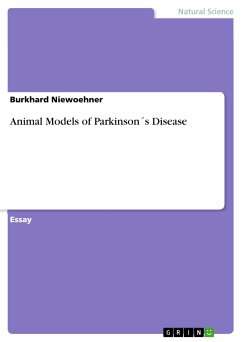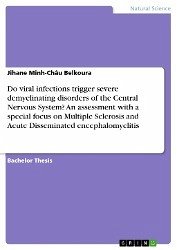Essay from the year 2003 in the subject Biology - Neurobiology, grade: 1,0 (Distinction), Oxford University (Department of Experimental Psychology), language: English, abstract: Parkinson's disease (PD) was the first neurological disease to b e modelled in animals. Early models of PD used toxins which selectively targeted dopaminergic neurons, such as reserpine, 6 -hydroxydopamine, and 1 -methyl-4-phenyl-1,2,3,6tetrahydropyridine. These initial models have greatly contributed to the current understanding of the pathogenesis of PD and have proven to be valuable tools in the development of novel therapeutic approaches, but have failed to mimic important characteristics of PD. Recently, it has been found that chronic systemic exposure to the pesticide rotenone can reproduce specific features of PD in rodents. Moreover, the association of a-synuclein mutations with some cases of familial PD have motivated the development of genetic models of PD in mice and Drosophila. The present essay gives a brief survey of the clinics and pathophysiology of PD, discusses the different animal models of PD currently available, and briefly compares the suitability the rodents and primates as models for human PD.
Dieser Download kann aus rechtlichen Gründen nur mit Rechnungsadresse in A, B, BG, CY, CZ, D, DK, EW, E, FIN, F, GR, HR, H, IRL, I, LT, L, LR, M, NL, PL, P, R, S, SLO, SK ausgeliefert werden.









